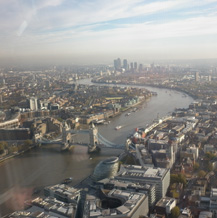Violent incidents cost London £3 billion last year, according to a capital-wide assessment of violence. Separately a look at the reviews after each specific murder, by the Social Care Institute for Excellence, was commissioned by London’s Violence Reduction Unit (VRU). The two separate studies combined provide a map of violence, says City Hall.
Alongside the loss of life, the economic impact to the capital is substantial; that cost of £3bn in 2018/19 is for responding to homicides, violence offences, sexual offences and robbery, and the loss of economic output.
As for street drug markets, the report describes them as becoming both more lucrative (due to increases in the supply and purity of cocaine) and more competitive (due to greater competition from online suppliers of narcotics). “This combination of a more lucrative yet smaller street market may have driven violence by increasing the competition between organised criminal groups. It may also have driven the rise of county lines …”
For more on county lines from London, visit https://www.london.gov.uk/city-hall-blog/lifting-lid-county-lines.
On policing, the report says that reductions in police and police staff numbers and wider criminal justice capacity are ‘likely to have made it more difficult to disrupt and deter violence’. That police are called to ‘non-crime’ due to cuts in other public services, the report suggests, has made it yet harder for the Met ‘to invest time to build relationships and carry out preventative work in neighbourhoods vulnerable to violence’.
The report warns that there are no quick fixes, and cannot explain ‘the apparent deep-seated relationship between neighbourhood poverty, weak social cohesion and vulnerability to gangs’.
Specific case reviews are carried out by an independent Chair, supported by police, local authorities, health providers and probation services, to help better understand the circumstances of an incident. This piece of work focused on all of the reviews published since January 2016, bringing together domestic homicide reviews, serious case reviews (when a child or vulnerable adult dies or is seriously injured when abuse or neglect are thought to have been involved), safeguarding adults reviews and mental health homicide reviews. The reviews found that:
– Violence has become more serious, more frequent and driven by use of knives. The VRU points to a 47 per cent increase in knife-related homicides since 2016, while between 2013/14 and 2017/18, hospital admissions for assaults with a sharp object increased by 32 per cent.
A highly localised approach – even down to specific roads and estates – is essential to understanding and responding to violence, it’s suggested. The 77-page report spoke of a ‘geographic concentration of violence’.
The deprivation of certain London neighbourhoods and vulnerability to gang-related criminality is deep-seated, according to researchers. The report cites London School of Economics research which shows that more than half of all the poorest neighbourhoods were also the poorest 100 years ago, and targets for criminal gangs operating in areas with high levels of deprivation.
Community and social cohesion are important tools in keeping neighbourhoods safe.
The report recommends supporting schools to do more to protect young people from exposure to gangs, and reducing exclusions.
Domestic abuse features in a high proportion of reviews, and is recognised as a form of trauma, particularly for a young person. The impact of Government cuts are likely to have increased the vulnerability of some neighbourhoods to violence. Between 2011/12 and 2018/19, 46 per cent of funding for London’s youth services was withdrawn. A reduction in police officer numbers has impacted on the police’s ability to disrupt and deter violence.
The drugs market has become more lucrative which has increased competition between criminal gangs. The darknet and its expansion has increased competition in drugs market.
Lib Peck, Director of the VRU, said: “We know the causes of crime are deeply complex and the reports published today make it clear that it has been made far worse by a decade of cuts to the police, youth services, councils and after-school clubs. These reports, the first of their kind in London, are a stark reminder of the impact violence has on families and communities, but also on the wider city economy and on how emergency and public services respond to horrific incidents.
“We’re already investing in a programme to drive down school exclusions, provide greater after-school care for young people and support communities who often know what works best in their areas, but don’t have the tools or resources to do as much as we would like. The reports will help further our understanding and knowledge and reinforces our approach to focusing our efforts on providing interventions in specific local areas to drive down violence.”
See also a Global Cities Policing Lecture webcast.
Meanwhile, Unmesh Desai, chair of the London Assembly Police and Crime Committee has written to Sophie Linden, deputy mayor of policing, asking Sadiq Khan the Mayor to task the London Modern Slavery Partnership Board with developing a coherent strategy for modern slavery, specific to London.










